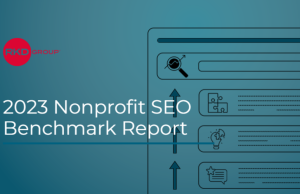As most tech and creative professionals will tell you, you can only pick two when it comes to good, fast, and cheap. This is especially true in the world of podcast production, which will take as much time as you have to give.
At a certain point, there is a diminishing return on investment. And if you’re aiming for a nonprofit podcast on par with This American Life or something out of Gimlet Media, you’ll be hard-pressed to keep it cheap and fast.
This doesn’t necessarily mean that you should abandon your podcast idea. The right nonprofit podcast can build on your storytelling and media to leverage audience interest. Let’s look at how to vet your idea and, from there, how to create the podcast version of a “minimum viable product.” That’s a podcast that has just enough quality to satisfy your audiences, made for just the right budget, and timeframe.
First: Why create a podcast? Podcasts are an intimate medium that allow for complex ideas to be told as stories, capitalizing on long form narratives without relying on users to read a 3,000-word article. Mobile and in-home devices like Alexa are making it easier than ever to listen while multitasking, which means that, in 2018, 44 percent of Americans older than age 12 had listened to at least one podcast, according to Edison Research (https://bit.ly/2A0tarx).
The audio asset of podcasts lives on and can also be reused over time, depending on how it was created. This means episodes can continue to provide value to the organization long after the recording date.
Second: Why you should not create a podcast. It’s important to manage expectations as you join the over half a billion podcasts listed on iTunes (https://bit.ly/2j4vZTt). For those hoping to magically hit Serial-level (https://serialpodcast.org/) numbers, it will take you far more than this article to even reach the quality necessary to achieve that goal.
To estimate the return on investment (ROI) for your podcast, calculate the estimated time involved versus the number and quality of potential listeners. Create this calculation in advance to gauge the potential value of your target audience compared to the amount of time you’re willing to allocate. Roughly estimate that for every minute of recorded podcast, it will take two to four times that to produce it properly. If, after having gone through this cost-benefit analysis, you’re still reading, here’s how to create an MVPP (minimum viable product podcast).
- Choose the format.
Regardless of the style of podcast you want to produce (interviews, serialized story, story of the week), consider an initial limited run of 10 episodes and set a release schedule. Here are some formats to consider:
* Interview series: Create a consistent line of questions that will help the audience know what to expect, à la Hack the Entrepreneur (https://bit.ly/2H9gPXr).
* Behind the scenes: This can give listeners a look at internal operations, such as Gimlet Media’s StartUp. Season One of this series (https://bit.ly/2HqbXdv) documented Gimlet founder Alex Blumberg’s creation of the company.
* Stakeholder stories: These can be presented in the context of the larger social issue at the core of your organization’s work. Bending the Arc podcast (https://bit.ly/2VNgiO8) from the University of Pennsylvania’s School of Social Policy talks with local community members about issues such as homelessness.
* Pop-culture focus: This talk-show style can focus on a topic in pop culture that is relevant to your organization’s work and voice. One on One’s and Roses (https://apple.co/2NQlXQH) takes a fun approach to following the relationships on The Bachelor.
* Current events focus: With guest experts and commentary following the news as it relates to your organization, such as Bombshell – War on the Rocks, (https://bit.ly/2VP4LxR) which features an all-female panel of experts covering topics around national security.
- Create a roadmap for booking guests and recording.
There are tons of tools and for podcasting that range in cost. For the purpose of an MVPP, here are three good, entry- and mid-level options for recording.
* For field interviews, a battery-powered field mic with an additional lavalier is smart and portable. Take a look at Zoom H1n’s Handy Portable Digital Recorder (https://amzn.to/2EMhk5Z) with lav at $132, or a simple split-lav that can be plugged into your phone and used with your voice-recording app, such as this solution by MAONO (https://amzn.to/2TAvbpC ) at $29.
* Recording at home or the office can be done with a laptop and external mic, using Skype for the call. To record over Skype, a free tool like Skype MP3 Recorder (https://bit.ly/2tTQ7cH) can be used (price ranges from free to $10/year). Alternatively, you can use Anchor (https://bit.ly/24eLatc) to record guest interviews and host your podcast.
* A hardware recommendation for recording to a computer is Rhode Podcast Microphone (https://amzn.to/2TrHMMo) at $169. Though lower cost mics like the TONOR PC at $22 (https://amzn.to/2EW9BUl) can work, the quality is noticeable. Both come with a necessary pop filter, which eliminates extraneous noise.
Booking guests is incredibly time-consuming. To operationalize this, create your podcast pitch and sample questions that can be sent to multiple contacts, while personalizing your cover letter to make a better and more targeted ask. Once booked, make sure you send preparation questions and tips so that your guest is ready.
- Avoid common recording issues.
Sending a list like this to your guests might save some headaches and retakes.
* Background noise: Everything you hear comes across twice as loud on recording as it does in the space. Unless you’re on-location and deliberately recording the soundscape, background air conditioners, refrigerators and fans have ruined many a podcast. Try recording a baseline silence in your room first to test the quality.
* Notifications on your computer devices:. Try to have only critical apps open and keep your phone on airplane mode.
* Table taps: Guests and hosts tend to do this when making points or writing notes. These sounds resonate through the table that the microphone is sitting on, causing a lot of background noise.
* Not taking a pause before answering a question: These pauses are great for collecting your thoughts and are easily edited out, making for snappier responses. Advise guests to also avoid replying to questions with, “That’s a good question,” or “Um…” Silence is golden.
* Not using an external mic: Advise guests to use an external mic whenever possible.
- Edit and produce your podcast.
Create a polished intro and outro theme that reinforces the brand and message of your podcast. Adding some theme music to this can go a long way, and royalty-free music sources like Ben Sound (https://bit.ly/2h9Rc9d) and Free Music Archive (https://bit.ly/1kqig2i) are great places to shop. To edit the final episode, you can either do it yourself (DIY) or outsource.
DIY: If you have the time and appetite to learn a tool like Hindenburg or Audacity, building internal capacity for editing and producing is smart if your organization is going to make a long term commitment to podcasting. This might be a great task for a media or communications intern. Tools recommended for this include:
* Hindenburg (https://bit.ly/2Ut0nUW) for a free 30-day trial, $95/year;
* Audacity (https://www.audacityteam.org/) for free;
* Garage Band for Mac (https://apple.co/1z2afrj) for free; and,
* Pro Tools (https://bit.ly/2SScERg) for $25/year.
Hiring a professional editor is common and will cost anywhere from $20-$150 for an hour of edited podcast. Marketplaces like Fiverr (https://bit.ly/2TITLVr) will help you find an affordable editor. At the mid- to higher-end, you can find higher quality podcast editing (https://bit.ly/2SSHcSC), which might be better if you have a limited run of podcasts planned.
- Promote your podcast.
Podcast distribution networks make accessing your content locally or nationally very similar as long as you have hosted episodes properly. The following websites will host your episodes and promote your podcast across major networks like iTunes, Google Play, and Spotify:
* Anchor – free podcast hosting software (https://bit.ly/24eLatc)
* Podbean.com – paid hosting platform with metrics (https://www.podbean.com/)
* Blubrry – podcast hosting via WordPress and stats (https://bit.ly/2qOveAE)
* SoundCloud – audio hosting network (https://bit.ly/1dx8l2V)
Some quick tips for promoting your podcast:
* Ask friends, family, coworkers and podcast guests to leave ratings on iTunes. This determines rankings in their algorithm.
* Include a link to the podcast in your organization’s email signatures
* Embed episodes on your site and offer to partners.
* For nonprofits, use the Google Ad Grant to send search traffic (https://bit.ly/2tWumcb) to the podcast page on your site.
* Tag guests when you launch their episodes.
* If you’re in a local region, look for podcast or radio groups that syndicate work like Transom (https://bit.ly/2SSaKQC) to re-publish your work for a larger audience. Consider being a guest on other local podcasts to highlight your work.
- Measure it.
Remember that the ROI calculation can only work if you continually measure podcast engagement (https://bit.ly/2ctvpIZ) across all distribution platforms. Most platforms have built-in metrics, but don’t forget to also consider the quality of the audience that does listen when reporting.
***
George Weiner is founder and chief whaler at technology firm Whole Whale. His email is [email protected]








